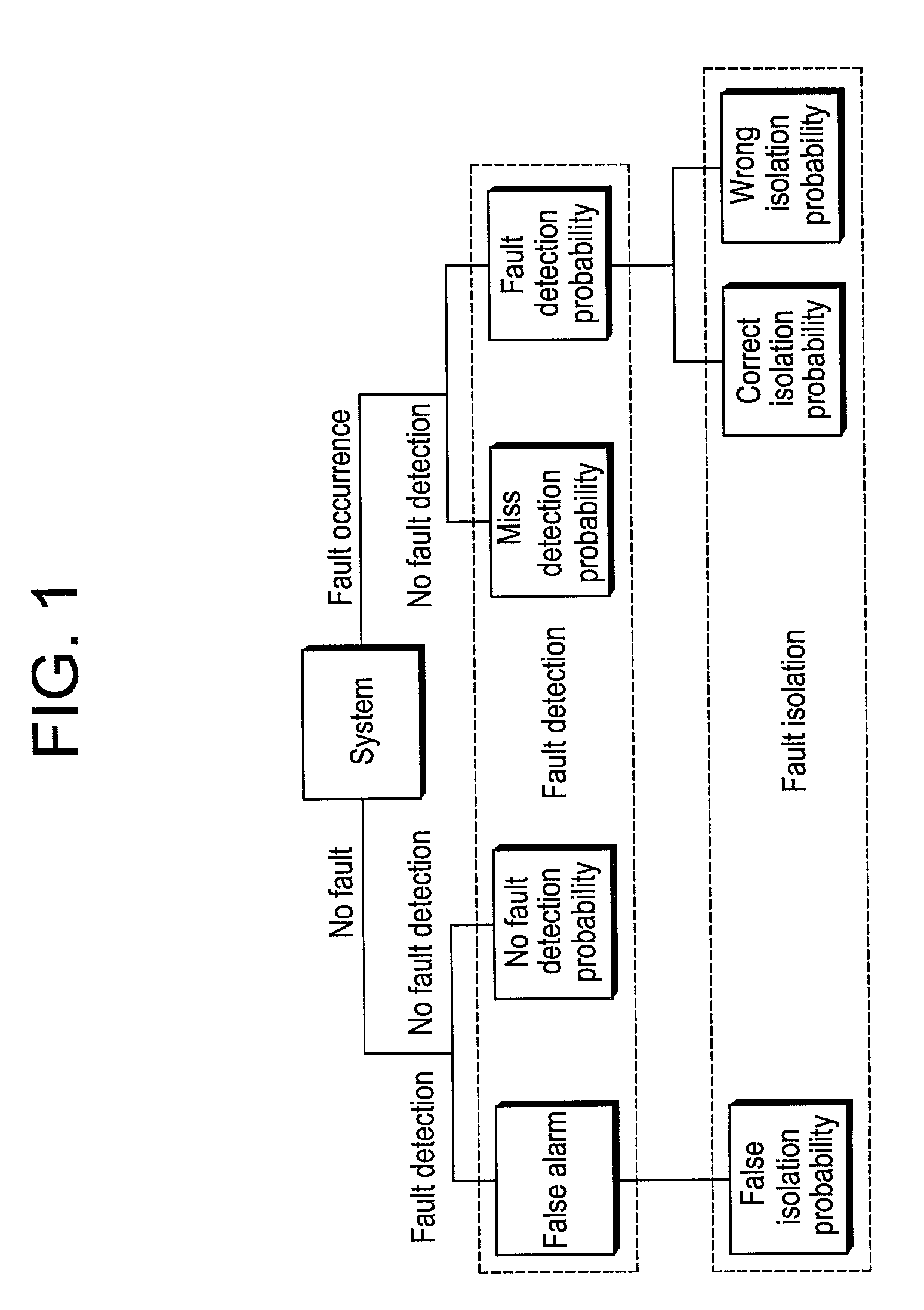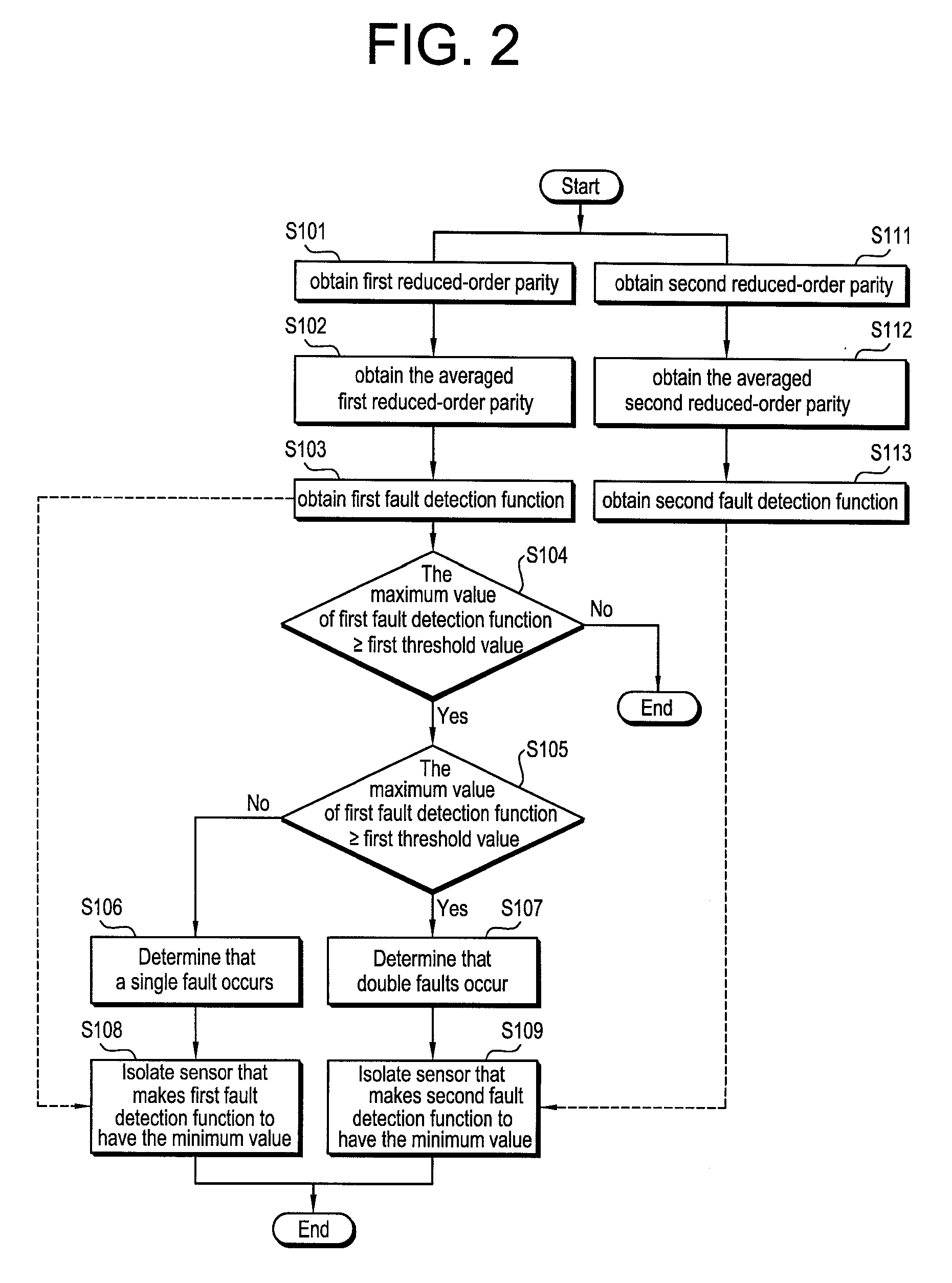Method of detecting and isolating fault in redundant sensors, and method of accommodating fault in redundant sensors using the same
a technology of redundant sensors and fault isolating methods, applied in the direction of instruments, coding, testing/monitoring control systems, etc., can solve the problems of high manufacturing cost, high hardware and software structure of subunits, and physical increase of systems, so as to achieve high probability of fault isolation
- Summary
- Abstract
- Description
- Claims
- Application Information
AI Technical Summary
Benefits of technology
Problems solved by technology
Method used
Image
Examples
Embodiment Construction
[0040]A system for detecting and isolating double faults in sensors according to the present invention and a method of detecting and isolating double faults in sensors according to the present will now be described more fully with reference to the accompanying drawings, in which exemplary embodiments of the invention are shown.
[0041]FIG. 1 is a flow chart illustrating a method of detecting and isolating double faults in sensors according to the present inventions.
[0042]Following assumptions are used for the current embodiment to detect and isolate faults in sensors.
[0043]Assumption 1: n sensors are used and the input axes of any 3 sensors are not on the same plane. That is, N sensors each independently are geometrically configured.
[0044]Assumption 2: sensors of equivalent kind (accelerometers and gyroscopes) have identical noise characteristics, where the noise are white noise of which measurement have normal distribution of the same standard deviation, and the noise characteristics...
PUM
 Login to View More
Login to View More Abstract
Description
Claims
Application Information
 Login to View More
Login to View More - R&D
- Intellectual Property
- Life Sciences
- Materials
- Tech Scout
- Unparalleled Data Quality
- Higher Quality Content
- 60% Fewer Hallucinations
Browse by: Latest US Patents, China's latest patents, Technical Efficacy Thesaurus, Application Domain, Technology Topic, Popular Technical Reports.
© 2025 PatSnap. All rights reserved.Legal|Privacy policy|Modern Slavery Act Transparency Statement|Sitemap|About US| Contact US: help@patsnap.com



